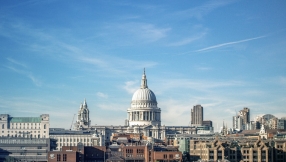Church of England aims to shrink carbon footprint further
Speaking at Lambeth Palace at an event to mark the third anniversary of the Church's environmental campaign, the Bishop of London the Rt Rev Richard Chartres urged representatives from all dioceses to go one step further in cutting the carbon reminding them that caring for the planet is a Christian imperative for the sake of future generations.
He said by putting its own house in order the Church could then take an even stronger lead in campaigning for change at a local level in parishes and in the international arena in the run-up to the important climate change talks at Copenhagen in December.
Joan Ruddock, Parliamentary Under-Secretary of State at the Department of Energy and Climate Change, backed the bishop’s call at Lambeth Palace.
“The Church of England and other faith communities are to be commended for taking the lead in the fight against climate change, both through reducing their own emissions and highlighting the issue with their parishioners. Today’s event is another significant step, helping to build public support for a global deal on climate change in Copenhagen," she said.
Bishop Chartres, who chairs the Shrinking the Footprint campaign, added: “Protecting the most vulnerable from the damaging effects of climate change is a moral imperative for all of those that profess to love their neighbour. Responding to climate change requires immediate action and those in positions of spiritual and moral leadership have a vital part to play.
“In the two years since the launch of the Shrinking the Footprint campaign, the Church of England has taken its own steps towards reducing its carbon footprint. The two year anniversary of the campaign provides us with an opportunity to celebrate the measures taken in dioceses across the country, to reflect on the further steps that the Church needs to take to become fully carbon neutral and to call on our political leaders to do more to safeguard the future of the planet.”
New toolkits and resources with energy saving tips and guidance for churches, cathedrals, schools and clergy homes have been available on the Shrinking the Footprint website. These include downloadable action plans and checklists along with advice on considering the appropriate use of renewable energy in church buildings.
The resources are part of the Church's Carbon Management Programme (CMP), undertaken by AECOM (formerly Faber Maunsell) on behalf of the Carbon Trust which looked at the institutional footprint of the Church estimated to be around a third of a million tonnes.
The CMP report shows that by ensuring energy is used efficiently in cathedrals and church buildings the Church of England could reduce this footprint by as much as 12 per cent or almost 27,000 tonnes.
Many carbon saving initiatives are already going on across the country and it is estimated that the Church’s footprint when next calculated will be considerably less. London Diocese is carrying out a range of projects including area environmental audits on energy, carbon, water and waste; aiming at a minimum 20.12 per cent saving by 2012.
Shrinking the Footprint is now being extended to include water and biodiversity: representatives of the Environment Agency, Natural England and CIWEM, the Chartered Institution of Water and Environmental Management addressed these new areas at the conference.
A CIWEM spokesperson commended Shrinking the Footprint saying it was vital “for faith leaders to embrace and extol environmentalism, both for the sake of protecting nature and humankind and of furthering social justice”.













